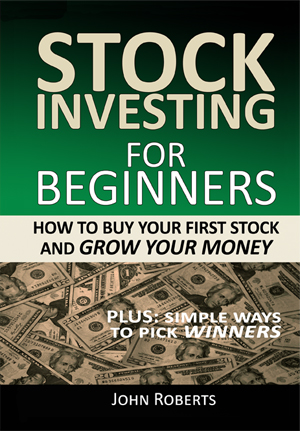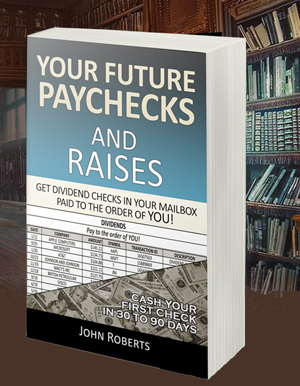What It’s Like To Sell A Stock Option
We know this fact – that people who buy stock options lose their money 80% of the time because their stock options expire worthless. They ran out of time.
So it’s not a great leap to figure out that the people who sell them those options win 80% of the time. They get to keep the money the people paid them for the option. This money is called a premium, by the way
So it seems like the smart thing to do is to sell options instead of buy them. The odds of winning are much better.
So what is it like to sell an option?
Let’s do one right now and find out. Let’s sell an option on Microsoft stock.
The first thing we want to do is to buy 100 shares of Microsoft stock. Let’s say Microsoft stock is selling for $32 a share. So we pay $3200 dollars, and buy 100 shares of Microsoft stock.
Why do we do this? Because we do NOT want to just sell an option by itself. This can put you in a situation of unlimited financial liability and you can lose your house, car, etc. – really. So don’t just go out and sell options without first buying a 100 shares of the stock (note that advanced traders that know what they are doing may do this, but for right now just treat this as an absolute law – do not sell options without owning the stock).
Why do I say buy 100 shares? Why not 3 shares, or 49 shares? It’s a simple reason, really. Options are priced per hundred shares and you can only buy them in lots of 100. Just like eggs are priced per dozen and you can only buy cartons of 12 (I know, I know, they sell them in cartons of 18, 6, 144, etc. but just go with my analogy here).
So now you own your 100 shares of Microsoft stock. Its symbol, by the way, is MSFT so I will refer to it as MSFT sometimes (I explain stock symbols in detail in my book Stock Market For Beginners).
Now you want to sell an option. But how much can you sell it for?
The simple answer is you can sell it for what people are willing to pay for it. And these prices are published so you can look them up. You can ask your broker, or if you have an online trading account, you can look it up right there. Which is really handy, because you can then sell you option right there in your online account (by placing a sell order, which then gets bought – or filled – same thing).
Note that there are a number of good online brokers – I have used TDAmeritrade for ten years and been quite satisfied with them. Most online accounts will show about the same basic information. I will use TDAmeritrade in my examples, but this should be quite similar to other brokers if you use them.
So you can go to your account (Research and Ideas à Stocks à Option Chain) and then enter MSFT and it will tell you what people are willing to pay for the option you want to sell.
So let’s think real quickly about what we are going to do in human terms. Here’s what our example below is going to illustrate.
Essentially we are placing a bet with someone on what the stock price will be in the future. Microsoft stock is $32 a share right now. We are going to sell someone an option to buy our 100 shares of Microsoft stock for $33 anytime they want to in the next 71 days. They are going to pay us $68 for that right – that’s their side of the bet. Of course they aren’t dummies, so they aren’t going to buy our shares for $33 unless the stock goes over $33. If the shares never go over $33 in the next 71 days, we win and keep our 100 shares AND the $68 premium they paid for the option.
But, for example, if the stock goes to $35 in 71 days they will definitely buy our 100 shares for $33 because they will make $2 a share (times 100 shares) for a quick profit of $200. And we will have sold our shares for $100 profit (it was at $32 when we sold the option and we sold the shares for $33 a share – $1 profit times 100 shares = $100).
Plus we keep their premium of $68, so even though we lost the bet, we made $168). Sweet.
Okay, so that is what we want to do. So back to how do we find out the price we can sell it. Well, we can look it up in our trading account.
You will see something like this …
MSFT May 19 2012 – 71 days to expiration
|
Calls |
Ask |
Last |
|
33.0 Call |
.68 |
.68 |
So what does this mean?
Well, you see MSFT, so that means you are looking at the price of a stock option of Microsoft Stock.
You see the date May 19, 2012 so that means the option does not expire until May 19, 2012 – then it ceases to exist and is worthless. And you see 71 days until expiration (note I looked it up as I wrote this on March 10. 2012). So the option is good for 71 days (from March 10 to May 19).
So then you see Calls. What is this Call thing? Well, to keep it simple for right now, Calls are when people are betting a stock will go up. You are selling a call to someone who is betting stocks will go up – just go with this for now.
So you see a 33.0 Call in the box. This means purchasing this option will give the buyer the right to buy 100 shares of Microsoft stock from you at $33 any time in the next 71 days.
And you see Ask and a .68 in the box below. Ask is the price people are asking for when they are selling options – that’s you, right. So you see .68, which is 68 cents per share. Since an option is for 100 shares, people are selling Microsoft $33 May options for $68. This is probably what you can sell your shares for. Because you see to other box called Last with .68 below it. This is what the last person that bought these options paid for them. Good to know, yes? That’s why I said you can probably sell them for that price if you put in your sell order right now.
So you place an order to sell your option for $68. And someone buys it.
What just happened? Immediately, their premium of $68 they paid you to buy this option, this right to buy your shares for $33 in the next 71 days, is placed in your account. You account is now $68 richer.
Then you just wait. If 71 days go by and they don’t buy your shares for $33, you keep the premium and your shares like we said above.
If the price goes above $33 and they buy you shares for$33, then you don’t own the shares any more, but you made $168, again, like we said above. By the way, when they do this, another term for this is “they called your shares away, i.e. they took them. Did a little light turn on in your head about why we said you were selling calls earlier. That’s where that call word comes from.
So that’s what it’s like to be on the 80% winner side and sell options instead of on the 80% loser side of buying them.
But you may be wondering, is my only choice to sell my options for $68 if the price goes above $33 a share in the next 71 days?
Actually, no – you have many more choices, prices and different months to choose from. And that will be covered in our next post on Stock Options For Beginners.
To your health and prosperity – John



